Rin Tin Tin
One of the biggest movie stars of the silent era was the German shepherd Rin Tin Tin, and like other stars in the early years of Hollywood, he would make the commute to Chatsworth, Calif., to work on the Iverson Movie Ranch.
Rin Tin Tin appeared in 27 feature films from 1922-1931, almost all of them silent. While many of the films have been lost, we have uncovered three of the surviving movies, so far, that were filmed on the Iverson Ranch.
Rin Tin Tin and Charles Farrell in "Clash of the Wolves"
The 1925 feature "Clash of the Wolves" is the earliest Iverson location shoot we've been able to track down for Rin Tin Tin. In the movie, Rin Tin Tin plays Lobo, a half-dog, half-wolf with a price on his head.
Rin Tin Tin Jr. — son of the original Rin Tin Tin — in "The Law of the Wild" (1934)
It's easy to confuse the original Rin Tin Tin with later dogs, especially Rin Tin Tin's descendants, who also appeared as the character Rin Tin Tin. Many of the later "Rin Tin Tins" also filmed on the Iverson Ranch.
Lee Aaker and a latter-day "Rin Tin Tin" in the TV series "The Adventures of Rin Tin Tin" (1954-1959)
These days when we remember Rin Tin Tin we tend to think of the 1950s TV show, in which multiple dogs played the title role. These dogs were called "Rin Tin Tin," but they were lighter in color than the original.
Aaker and the TV series dog on the Iverson Ranch in the 1955 episode "The Ghost Town"
The TV series was based at Corriganville's Fort Apache, but traveled to the Iverson Ranch from time to time to mix things up. Longtime readers may recall the above shot from our series on the Iverson Western street.
As popular as the TV show was, none of the later Rin Tin Tins reached the superstar status of the original.
"Man From Hell's River" — Rin Tin Tin's first movie
Rin Tin Tin's movie career began in 1922 when he was cast in "Man From Hell's River." Billed as "Rin-Tin," he was already being hyped as "The Dog Hero," signaling a career of movie heroics yet to come.
After a pair of features for smaller studios, Rin Tin Tin landed at Warner Bros., where he was an instant sensation. His 1923 movie "Where the North Begins" has been credited with saving the studio from bankruptcy.
A string of successful Rin Tin Tin features followed. With Warner Bros. seeing to his marketing, and his name typically stylized as "Rin-Tin-Tin" with hyphens, the dog became one of the biggest box office draws of the 1920s.
"The Lighthouse by the Sea," 1924
By 1924, Rin Tin Tin was being billed as "Greatest Canine Actor Ever Screened" — along with "The Wonder Dog" and other superlatives.
The studio nurtured an image of Rin Tin Tin as something more than just a dog — and it worked. Besides selling theater tickets, Rin Tin Tin helped make the German shepherd the most popular dog breed in America.
Darryl F. Zanuck
In turn, Rin Tin Tin's success helped the young Zanuck gain a foothold at Warner Bros., setting the wheels in motion for the ascent of the man who would eventually run 20th Century-Fox — along with much of Hollywood.
Warner Bros.' Rin Tin Tin braintrust, circa 1924
Rin Tin Tin hangs with the big boys — L-R: hot young writer Darryl F. Zanuck, studio boss Jack Warner and long, lean Malcolm St. Clair, who directed Rin Tin Tin in "Find Your Man" and "The Lighthouse by the Sea."
When he wasn't having his picture taken with Hollywood moguls, Rin Tin Tin was with Lee Duncan, the dog's lifelong companion, who rescued Rin Tin Tin from a bombed-out German military kennel in World War I France.
Rin Tin Tin as a puppy in 1918 France, with Lee Duncan
Duncan found the pup while serving as an aerial gunner with the U.S. Army Air Service's 135th Aero Squadron. He reportedly named Rin Tin Tin after a good luck charm that was given to U.S. soldiers by French children.
Rin Tin Tin became the squadron's unofficial mascot, and posed with the outfit for this photo taken soon after the armistice in late 1918.
"Clash of the Wolves" (1925): Rin Tin Tin near the Garden of the Gods
Rin Tin Tin had eight movies on his resume by the time he was filmed on the Iverson Ranch for "Clash of the Wolves." We may never know whether this was his first visit to the location ranch, because most of those earlier films, like many of his later silent movies, are presumed to be lost.
But Rin Tin Tin clearly found his way to Iverson in 1925 — note the rock in the lower right corner, part of a large feature I refer to in my research as "Three Kings."
This is the same rock, photographed on a recent trip to the Lower Iverson's Garden of the Gods.
Promotional still for "The Silver Treasure" (Fox, 1926 — not a Rin Tin Tin movie)
To put the "Three Kings" rock feature in perspective, note this wide shot of the area, taken with the camera facing south. The promo shot was made during filming of the silent George O'Brien Western "The Silver Treasure."
The approximate section of "Three Kings" seen in the "Clash of the Wolves" shot is identified here in the "Silver Treasure" promo shot, although the two shots are taken from slightly different angles.
"Clash of the Wolves": hard-to-find filming area on the Lower Iverson
Another shot from "Clash of the Wolves" is harder to match up.
"The Silver Treasure" promotional shot
Once again, the detailed "Silver Treasure" promo shot from 1926 comes in handy, capturing a wider view of the filming area and helping to pinpoint the "Clash of the Wolves" location.
This version of the "Silver Treasure" photo identifies the two main rocks seen in the "Clash of the Wolves" shot. Note that one of the two rocks — the unnamed rock adjacent to Bathtub Rock — has survived.
To avoid having to continue referring to it awkwardly as the "unnamed rock," for now I'll use "Clash Rock" to identify the rock on the right — a tribute to its appearance in "Clash of the Wolves."
"Clash Rock," adjacent to Bathtub Rock (2017)
This is the same rock seen in the "Clash of the Wolves" screen shot, photographed on a recent visit to the condo area north of the Garden of the Gods.
A number of markers identify it as the rock seen in "Clash of the Wolves," with one of the best indicators being the indented area noted here.
The same indentation in the rock can be found in the "Clash of the Wolves" screen shot.
"Clash Rock" with its new neighbor — a condominium unit — in 2017
A wider view of the "Clash Rock" area in 2017 confirms the removal of nearby Ponderosa Rock for construction of a condo. It was part of the carnage that took place in the late 1980s when the Cal West Townhomes were built.
Bathtub Rock is barely visible in the recent shots, but it almost bumps up against "Clash Rock" along the latter's southwest side. If you see them up close it becomes apparent that Bathtub Rock and "Clash Rock" were once a single rock before they split in two — a breakup that probably took place millions of years ago.
Buster Keaton on Bathtub Rock in "Three Ages" (Metro Pictures, 1923)
Bathtub Rock gets its name from this scene in the Buster Keaton movie "Three Ages." You can learn more about Bathtub Rock by reading this previous post.

Ponderosa Rock in the "Bonanza" episode "Escape to Ponderosa" (1960)
Ponderosa Rock is one of those great old movie rocks that one tends to really miss — I know I do. The "Bonanza" episode "Escape to Ponderosa" was what inspired me to start calling it "Ponderosa Rock."
I wrote about the rock back in 2014 in connection with a Tom Mix stunt sequence from his 1935 serial "The Miracle Rider." You can click here to see that blog item — much of it focuses on Tom Mix Rock, but if you check out the last six or seven photos, they're all about Ponderosa Rock ... before I started calling it that.
The biggest challenge in my "Clash of the Wolves" research turned out to be trying to find the rock seen here, on which Rin Tin Tin strikes a series of charismatic silhouettes.
The readily identifiable Santa Susana Mountains to the west, along with the neighboring foothills, provide the entry point for narrowing down the location, and the alignment of the two hill profiles noted here is key.
"Pyramid Peak," as seen from the Upper Iverson
A little background on "Pyramid Peak" may be in order. I began calling it that in my research because of the shape of the feature as it appears from the Upper Iverson, where it comes to a pyramid-shaped point.
However, as one moves south, the peak quickly loses its pyramid shape, becoming more rounded.
"Pyramid Peak," looking even less "pyramid-like" from the Lower Iverson
Viewed from still farther south — from the condo area on the former Lower Iverson — Pyramid Peak becomes even further removed from its pyramid shape. But just like its pointed Upper Iverson counterpart, this rounded version of the peak is a common sight in the backgrounds of movies and TV shows.
Promo still for "Calling Wild Bill Elliott," 1943 (Jerry England collection)
Here's an example from Republic's "Calling Wild Bill Elliott." Pyramid Peak illustrates the concept that everything — whether it's rocks or something more philosophical — looks different depending on one's vantage point.
"Clash of the Wolves": Reading the background to try to find the filming spot
To narrow down the location of the rock that serves as a pedestal for Rin Tin Tin's silhouette, I first tried to locate a present-day match for the alignment of Pyramid Peak with the low hill below it.
Pyramid Peak and the hill below it in 2017, aligned similarly
This was the best I could do to duplicate the hills' alignment, both vertically and horizontally. It's impossible today to get a clear view of the hills from this angle due to the presence of condos and modern landscaping.
The background hills pointed the search to an area consisting mainly of the North Cluster Wall of Rock and the Low Wall/Footholds area, which have been discussed previously on the blog. (Click on the links in the preceding sentence if you would like to see more about those features.)
Bird's-eye view of the target area, noting the rock I first thought might be the silhouette rock
I wound up making multiple expeditions to the search area over a period of a few weeks, focusing initially on the rock designated here with the red arrow. You may want to click on the photo to see a larger version.
The same rock — which turned out NOT to be the right one (photo from 2014)
This is the rock I had in mind, seen up close — a rock I've been calling "Inchworm" since the early days of my Iverson Movie Ranch research. But try as I might, I couldn't get "Inchworm" to match the Rin Tin Tin shot.
"The Life and Legend of Wyatt Earp": "The Truth About Rawhide Geraghty" (1959)
This rock does have its own Hollywood history, however. "Inchworm" has found its way into plenty of movies and TV shows, including this appearance in the "Wyatt Earp" TV series.
But the "Wyatt Earp" appearance raises another question. Notice this small rock next to Inchworm.
Shouldn't that same rock be right around here somewhere? Taking a closer look at this photo taken in 2014, it occurred to me that the photo itself might contain the answer to that question.
The rock noted here bears a strong resemblance to the small rock in the "Wyatt Earp" screen shot. What's more, it's positioned right where one might expect it to land should it roll off the base rock — say, in an earthquake.
Inchworm and its neighbors in 2017
Unfortunately, a recent return visit to the site proved inconclusive, mainly because an encroaching bush — seen along the right edge of this shot — is choking off access to the possible wandering rock. In the interest of keeping the Rin Tin Tin research on the front burner, I decided to shelve the mystery of the wandering rock for now.
Unrelated rock found during the "Clash of the Wolves" search
Meanwhile, other distractions also cropped up along the way. In the course of recent Rin Tin Tin-focused sojourns, I came upon this little gem: a smooth rock hidden away around the edges of the search area.
"Outlaws of the Panhandle" (1941): Charles Starrett pauses near the same rock
It's the same rock seen in this shot of Charles Starrett from the Columbia B-Western "Outlaws of the Panhandle."
Site where the "Clash of the Wolves" silhouette shots were filmed
Despite a few detours, I persevered in scouring the search area for the site of the "Clash of the Wolves" silhouette shoot — and after weeks of poking around, I found the spot.
One problem, though, and it's a pretty big one: The rock on which Rin Tin Tin stood 92 years ago, posing for silhouettes for "Clash of the Wolves," has vanished from the site.
"Clash of the Wolves": lightened version of the silhouette shot, highlighting individual features
The location can be identified by any of a number of markers — note the various rocks, cracks and ridges identified in this lightened version of the "Clash of the Wolves" screen shot.
The same features in 2017, all still in place
The same features can all be identified in the recent photo. Considering that the two photos are taken more than 90 years apart, the photos illustrate a point that proves itself time and again on the former Iverson Ranch: The location's rich film history remains embedded in the rocks, waiting to be discovered and interpreted.
"Clash of the Wolves" (1925): Missing rock
But the discovery of the site leaves one big question still to be answered: What happened to the rock itself — the key rock in all of the Rin Tin Tin silhouette shots. The answer may be the biggest surprise of the entire endeavor.
The "Clash of the Wolves" silhouette rock today
Whoomp! There it is: It's a small miracle that the rock survived — and a bigger miracle that it was found. I walked past it several times without noticing it, even though it was the primary focus of my search.
I was unable to duplicate the exact angle seen in the movie, but this zoomed-in and lightened screen shot provides a fairly good comparison with the photo above this one.
What made this search trickier than most is that the rock has been moved — and to a nondescript spot. Today it rests a short distance southwest of where it was positioned when it was filmed for "Clash of the Wolves."
The Rin Tin Tin silhouette rock and its neighbors in their contemporary setting
Today the rock is what I would call a ground rock — one of the many rocks strewn about in the area between the condos and the Garden of the Gods that are just kind of lying around, not doing much.
In its present-day environs, the "Clash of the Wolves" silhouette rock is once again located below Pyramid Peak.
Today the silhouette rock is part of what might be described as a "community of rocks," most of which tend to be keeping a low profile.
The rock is oriented horizontally now, in contrast to its more upright stance in 1925. This shift in the rock's "attitude" tends to disguise it, including making the rock appear smaller today from most angles than it did in 1925.
I get the impression that many of the other ground rocks in the area might also have compelling stories waiting to be told. As with the "Clash of the Wolves" rock, the trick is to try to unearth those secrets.
The seemingly casual nature of the "community" of ground rocks belies the area's rich movie history. Right next to the silhouette rock is an old movie road going back to the silent era, which remains intact.
The old movie road leads to the original location of the silhouette rock, where the Rin Tin Tin silhouette shots were filmed for "Clash of the Wolves."
"Dog rock" located near the Rin Tin Tin silhouette rock
I was amused to see that the silhouette rock's closest neighbor today is a rock with doglike features. I was tempted to say it's a "ruff" neighborhood, but caught myself just in time.
"Clash of the Wolves" silhouette rock and nearby "dog rock"
I think this is the first time I've found a rock that was filmed in one location and then tossed somewhere else. The Iverson Ranch is nothing if not unpredictable.
Parker the Wonder Dog stands in the paw prints of Rin Tin Tin
Parker, part of a new generation of dog heroes for the 21st century, came along on one recent expedition, and he made himself useful by demonstrating that a large dog can still pretty easily fit on top of the Rin Tin Tin rock.
Promo still for "Tell It to the Marines" (MGM, 1926): Garden of the Gods and the Chinese bridge
I have a theory that might explain why the silhouette rock was relocated after filming on "Clash of the Wolves." My hunch is that it has to do with the silent Lon Chaney feature "Tell It to the Marines," which came to the Iverson Ranch the following year, 1926, and filmed in the same area.
As I detailed in a post two years ago — which you can read by clicking here — the producers built a massive set for "Tell It to the Marines," consisting of a Chinese bridge sitting on a base of fake rocks.
Filming location for "Clash of the Wolves" (1925) and "Tell It to the Marines" (1926)
The southern edge of the fake rocks supporting the bridge in "Tell It to the Marines" coincided with the spot where Rin Tin Tin was photographed one year earlier for "Clash of the Wolves." Here's a recent photo of the site.
Note rocks "A" and "B" along with the approximate location of the Rin Tin Tin silhouette filming in 1925.
Zooming in on the "Tell It to the Marines" promo shot, we can again spot rocks "A" and "B," and we see that the edge of the Chinese bridge/fake rocks set sits in close proximity to the original position of the silhouette rock.
My theory is that the silhouette rock was moved to get it out of the way so that the elaborate Chinese Bridge set could be installed. With the equipment brought in to install the bridge, it would have been easy to move the rock.
Glenn Ford in "Go West, Young Lady" — standing where Rin Tin Tin once stood
The 1941 Glenn Ford movie "Go West, Young Lady" also has a connection to Rin Tin Tin, the silhouette rock and "Clash of the Wolves."
Video clip from "Go West, Young Lady" (1941), starring Glenn Ford
Above is a 4-minute clip you can watch from "Go West, Young Lady." At the start of the clip, Glenn Ford scampers up the rock and stands in virtually the same spot where the Rin Tin Tin silhouette rock was positioned in 1925. The clip is filmed all over the Lower Iverson, and is lots of fun from a location standpoint.
The original Rin Tin Tin also worked on the Iverson Movie Ranch for the 1927 silent feature "Tracked by the Police" and the 1931 sound serial "The Lightning Warrior." My hunch is the dog made other movies at Iverson too, but I'm not optimistic that they will ever turn up.
Our research into Rin Tin Tin's exploits on the Iverson Ranch is still in its early stages. We're already sifting through material for a possible follow-up report, and will let readers know if it comes together.
We strongly recommend the book "Rin Tin Tin: The Life and the Legend," published in 2011. Journalist Susan Orlean, best known for writing "The Orchid Thief," spent years tracking down the life story of Rin Tin Tin for the book, which has been an inspiration for my own research.
If you're not already subscribed to the mailing list, please let us know if you want to be added. Send an email to iversonfilmranch@aol.com and we'll notify you each time we publish a new post



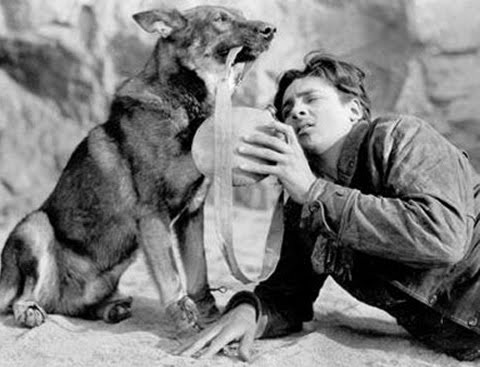









































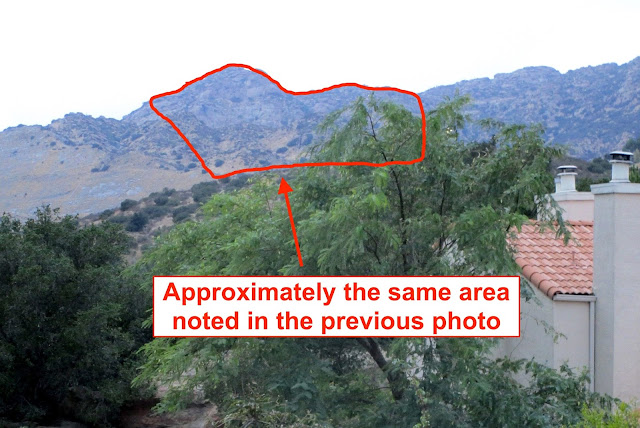





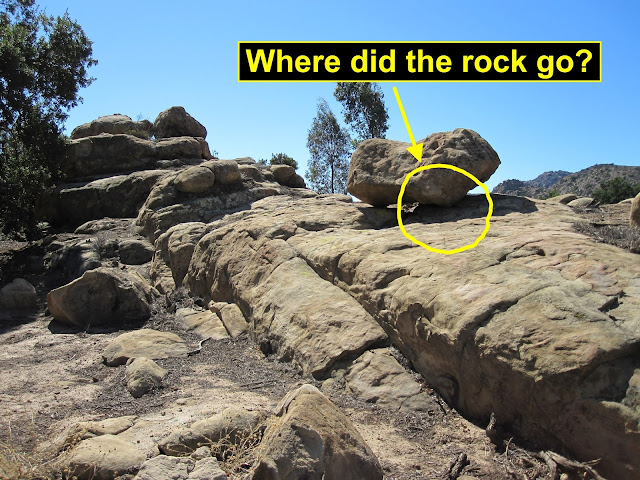

























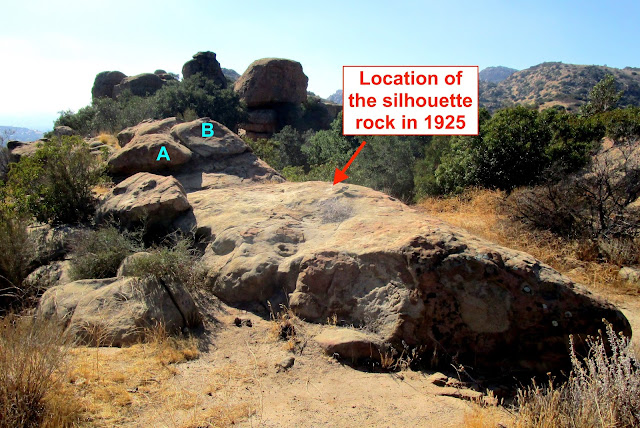



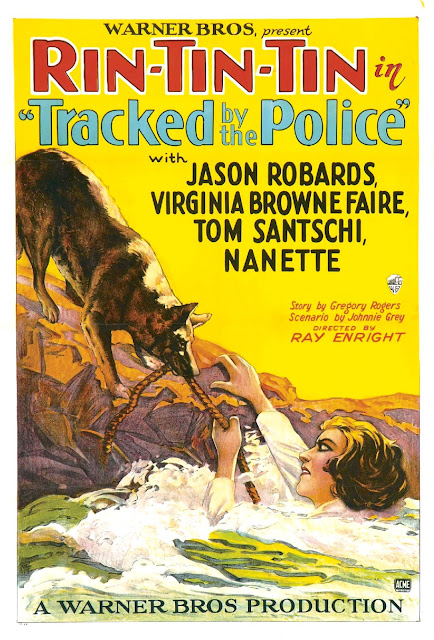


13 comments:
Well done, great details now forever captured in documented history, thank you for sharing this hard work and efforts with the rest of us. Brian in Dallas Texas
I enjoyed the mystery in your search to finding Rin Tin Tin’s Rock. Is Pyramid rock also known as Rocky Peak?
Thank you for sharing your exciting story.
I like your theory on the moving of the rock, it makes good sense. You always amaze me in your observations and thinking outside the box, great stuff.
Yo Rinny! Thanks for this great walk back through my youth!
One of your best posts. So much information, almost a mini story with a great “surprise “ ending. Superbly done.
Wonderful post. I'm a huge fan of Lassie, and I understand some Lassie episodes were shot in Iverson too. I'll comb through your past posts to see if you did any on Lassie - if not maybe that can be a future project! Thanks again keep up the wonderful work.
Thank you, everyone, for the terrific feedback. Please keep it coming. It's great to hear when people get something out of this. I know I get a lot from it!
Brenda, I've always suspected some Lassie episodes may have been shot on the Iverson Ranch, but so far I have yet to find one. Admittedly, there are a lot of episodes still to go through, so I will keep my hopes up. If anyone spots any Lassie shot at Iverson, please comment or get in touch.
Thanks again ...
-SN
Thanks for sharing your work with us...Very interesting!
Great website! Do you think you can do a blog entry about the appearances of Iverson locations in Disney's "Zorro" TV series from 1957?
In response to Anonymous above (from Nov. 20), who asked whether Pyramid Peak (not Pyramid rock) and Rocky Peak are the same thing, I've been wondering that myself for years. As well-known as Rocky Peak is, I've always hoped someone could point it out on the skyline west of the Iverson Ranch and state definitively which of those peaks is Rocky Peak. If anyone knows and can explain it, please let us know!
The article is fantastic! However, there is an error regarding the circa 1918 photo taken in France. That is not Rin Tin Tin as a puppy. It is (we believe) a German Spitz (known to most Americans as the Pommeranian). German Spitz do come in three sizes (think of Poodles) but this would be the smallest variety that later became the Pommeranian in America. Note the color is completely different than Rin Tin Tin, and the pronounced ruff around the neck. Otherwise, a fabulous article! Hope to see the Lassie article soon!
Thanks for your feedback, Anonymous. I believe you're right about the original photo, which is one that circulates online and is widely said to include a young Rin Tin Tin — a claim that appears to be incorrect. The dog in that photo, which I have taken down from this post, has much longer fur than Rin Tin Tin, along with the color differences you mentioned. I was able to find some other photos from 1918 France and have updated the post. I always appreciate everyone's efforts to set the record straight.
Rin tin tin was actually a brave dog in this movie. Though, he is a german shephar, but I've noticed same qualities as in teacup pomeranian, like both are smart, intelligent, and sometimes become aggressive.
Post a Comment